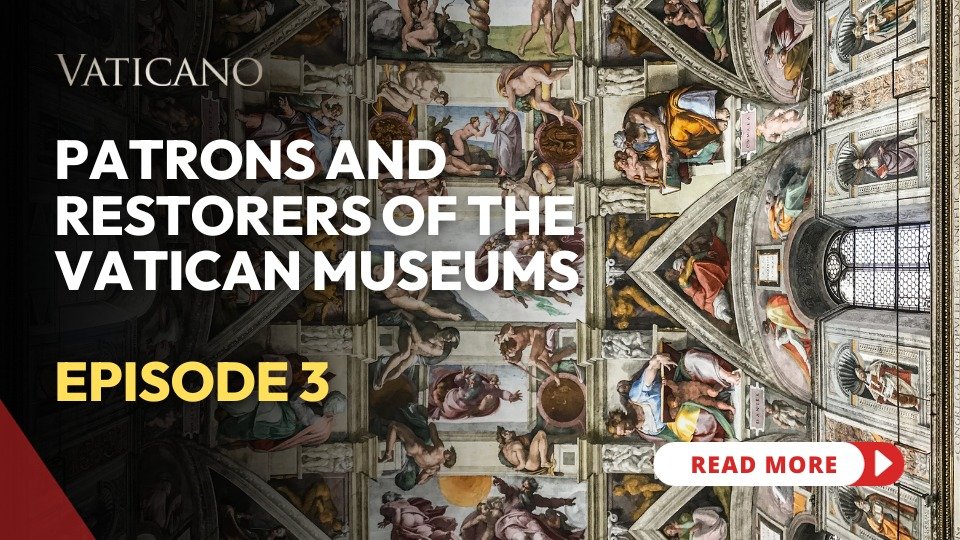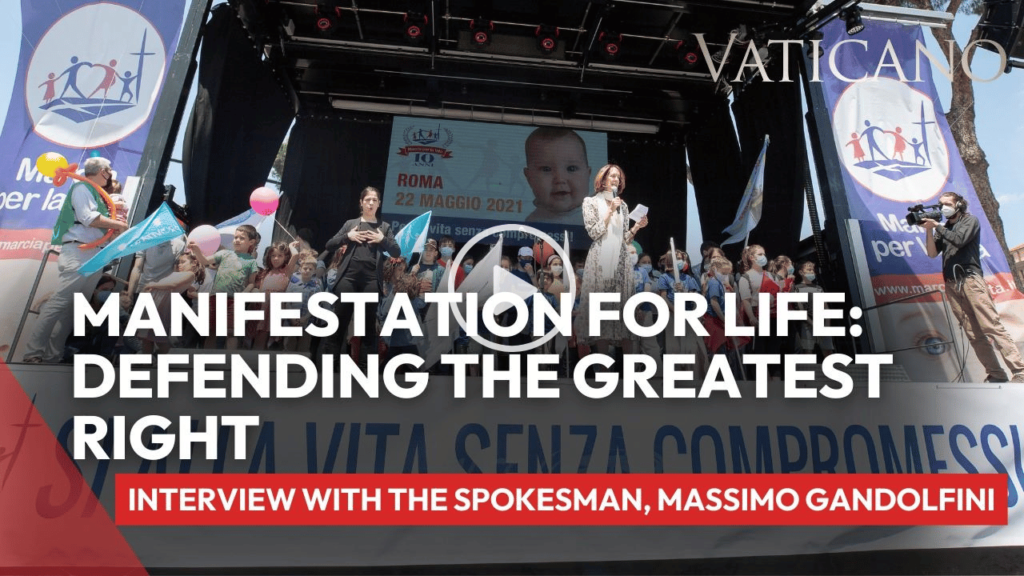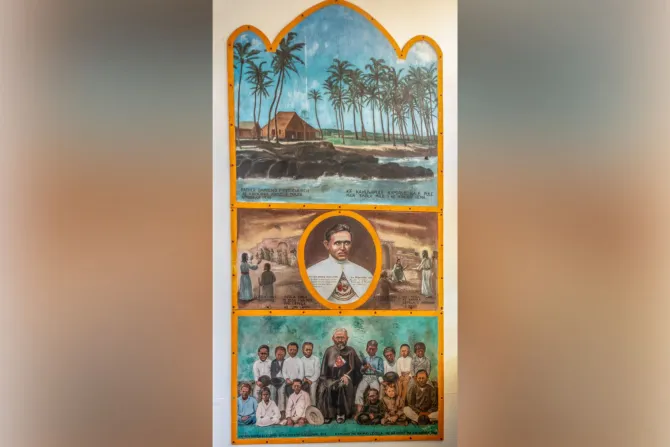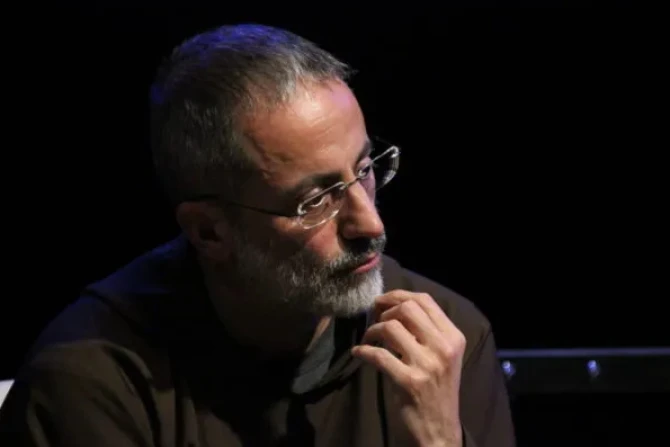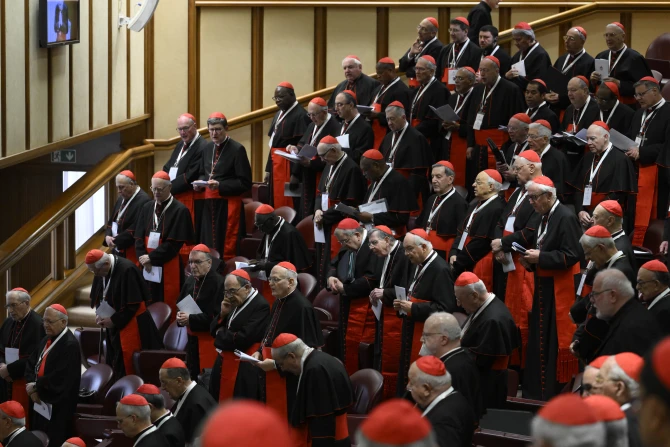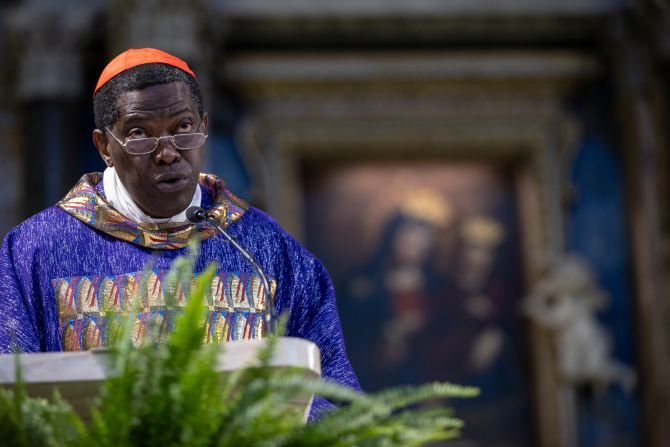EWTN Vatican brings you the third installment of our series on the Patrons of the Arts of the Vatican Museums, who recently held their 40th Anniversary Celebration in Rome.
EWTN Vatican Bureau Chief Andreas Thonhauser interviewed Monsignor Terence Hogan, the Vatican Office Coordinator for the Patrons of the Arts of the Vatican Museums.
We’re here in one of the many laboratories of the Vatican museums. It’s quite incredible how many works of art from different centuries and different continents are being brought here to be maintained and preserved for generations to come.
We are in the marble restoration Laboratory. And this is actually one of the first restoration projects that the patrons themselves began over a little over 40 years ago. The many statues that are here are the many pieces of marble come from very many periods of history. We can see pieces from pre-Christian, early Christian years. And then pieces that come from other parts of the world.
For the patrons, how do people actually choose which kind of which work of art they want to support, that they want to adopt?
So when a patron decides that they want to adopt a project, we give them what we call a wish book and they’re able to look through it and pick out something that they’re interested in. This is done by a chapter or an individual patron, and they see if it is something that they like.
Do you bring them down here, are they able to see what they are adopting?
That’s one of the greatest benefits of being a patron, is that you’re able to come down and visit the various laboratories that are here within the museums.
On a sample itinerary, after a visit to the marble section, a patron’s second stop would be the painting and wood restoration lab. Here, there is a particular emphasis on collaboration between restorers, curators, and the scientific department to determine proper diagnosis and treatment. In the analysis stage, they take a variety of ultraviolet, infrared, and x-ray scans to search for ongoing degradation or missing sections. Once all possible information is considered, the restorer can proceed according to instruction.
In the textile lab, restorers repair rare articles belonging to key church figures. This saddle skirt was once for the horse of Pope Clement XIV, who was Roman Pontiff from 1769 to 1774. He can be seen on that very saddle in an iconic painting of him riding above Lake Albano near the apostolic palace of Castel Gandolfo.
This medieval tunic belongs to the treasury of St. John Lateran at the Holy Stairs, which holds some of the most sacred relics of Christianity. It previously dated to the 6th to 8th century, but carbon-14 dating now reveals that it also contains materials from the late first century AD. This finding, along with its age-old presence in the Sacra Sanctorum, means that it could have belonged to an early church father or apostle, such as St. John the Evangelist.
In a part of the tapestry laboratory known as the “Sala di Tinture,” these two are preparing to dye wool threads to match existing ones for a tapestry that was made by the school of Rafael. In their work, they first consult a recipe book of 1,781 colors and tints to determine the best match.
Next, they mix the dyes and add water to a cylinder. Then they add plain threads. Once the cylinder is prepped, the restorer places it in a machine that mixes it together. This one can hold up to eight cylinders for any given cycle. Afterwards, the threads are removed and left to dry. They make the final stage of their journey through the hands of the restorers by weaving their way into a tapestry.
The Experience of Patrons
As many Patrons realize in their exclusive exploration of the Vatican Museums, Debra Mauro from the Patrons Canada Chapter, finds inspiration in the restoration works, saying, “To see the tiniest of details that they were working on was inspiring to me. This is honestly, I think it’s God’s talent through their hands.”
Richard Altig of the Patrons Northwest Chapter [USA] is amazed at the devotion of the restorers, “The fact that they dedicate their life to restoring this work for the world is very inspiring.” Lisa Altig of the same chapter spoke of her experience celebrating the 40th anniversary of the Patrons of the Arts of the Vatican Museums, “We’ve met the restores on several projects and they get so excited that we’re excited about the work that they’re doing.”
Next week on Vaticano, we continue with the fourth of five installments as we delve deeper into the connection between Art and Faith and see larger works being restored inside the Museums.
This article was edited by Jacob Stein.

